|
|
12.7 Thermal test in regard to fault conditions in lamp controlgear or electronic
; X+ G( V( x6 Z. d$ |devices in plastic luminaires
7 R, e# J/ j4 y7 S1 S3 w7 `( U. w, ?The test applies only to luminaires with a thermoplastic housing not fitted with an extra
+ n6 P h; a. o8 r! L- }) Rmechanical temperature-independent device as per 4.15.2.
6 \& ~! o3 K* ~2 M8 ^4 X0 Q6 E
$ Z% H0 K. {" r3 ?( m12.7.1 Test for luminaires without temperature sensing controls8 I" w" t1 P+ R2 ~7 I
The luminaire shall be tested under the conditions specified in items a), c), e), f), h) and l) of
6 E p" B; L8 a- w K+ m12.4.1. In addition, the following also applies.
7 P4 c! D# A5 h' Q/ h20 % of the lamp circuits in the luminaire, and not less than one lamp circuit, shall be$ n& I' p: O( h! G: Q; ^
subjected to abnormal conditions (see item a) of 12.5.1).* d) `3 E$ r) v- k" q2 b% P7 I1 S
The circuits which have the most thermal influence on the fixation point and exposed parts
0 X8 y2 \% y+ h$ z% b- {! D0 Yshall be chosen and other lamp circuits shall be operated at rated voltage under normal
, D; c) D" \( \$ xconditions.
0 {0 y' n3 _2 r0 A6 `$ y/ vThe circuits subjected to abnormal conditions shall be operated at 1,1 times (the rated voltage
1 @, R# t \. [- Q: p+ `0 G# r1 A# C: bor the maximum of the rated voltage range). When conditions are stable, the highest winding4 Y" L. o6 }- P% Z
temperature and highest temperature of fixing points and most thermally influenced exposed
. j+ A) h7 ~% n' h/ m3 ^parts shall be measured. It is not necessary to measure the temperature of small wound: D* i; ?* O; _; ^5 r) i2 n9 X
devices that are incorporated within electronic circuits.
- n. z: e7 k# {0 v; lCompliance
' o8 Y2 {; Z: J+ bThe values of the ambient temperature and the temperature measured at 1,1 times (the rated
; \7 X. Z9 q2 nvoltage or the maximum of the voltage range) are used for the linear regression formula in
5 \( i- {: w# }- P1 c0 H% P5 Acalculating the temperature of fixing points and other exposed parts in relation to a# ^8 h6 Y2 {5 T( n4 J5 a
ballast/transformer winding temperature of 350 °C. The calculated value shall not exceed the; Y& ~# c. |% D0 r0 s
temperature of the deflection under load of the material in accordance with method A as. O' M. h3 B' a3 [$ E L
defined in ISO 75 (1987), Plastics and ebonite – Determination of temperature of deflection
. W) U5 |5 X7 D. C" D8 D6 Aunder load.. f# h, ^6 j5 ^' w
12.7.2 Test for luminaires with temperature sensing controls internal/external to the+ L0 @7 e J) c) }1 C" z
ballast or transformer" C# w2 S: W# ]0 j- [
The luminaires shall be set up for this test as described in the first three paragraphs of 12.7.1.
. W" r+ U: U5 O) n" K4 L. q( V
! k: i7 c7 b" @The circuits subjected to abnormal conditions shall be operated with a slowly and steadily
4 |3 T8 r2 d7 @+ b+ i3 O/ cincreasing current through the windings until the temperature sensing control operates., X3 X2 P* J9 E9 s1 @! D
Time intervals and increments in current shall be such that thermal equilibrium between
1 k2 p* Y! u' z4 }winding temperatures and temperature of fixing points and most thermally influenced exposed
$ w: \& H- `& d. M* |parts is achieved as far as is practicable. During the test, the highest temperature of the spots$ Z; z) k9 r1 U) f7 ^
tested shall be continuously measured.' Z7 Q4 m) o& g1 Y
For luminaires fitted out with manual-reset thermal cut-outs, the test shall be repeated six7 R5 @/ q8 I* k; D& \8 o! |) c
times allowing 30 min intervals between tests. At the end of each 30 min interval, the cut-out
4 Y ~2 |& p m. Tshall be reset.& O, g/ ^ A" ~" B! y; K
For luminaires fitted out with auto-reset thermal cut-outs, the tests shall be continued until a# q' p$ V$ i* M# e) q |
stable temperature is achieved.
. ]- D0 o. i1 [2 `9 VCompliance
2 o5 n: D) q# q2 J+ t7 dThe highest temperature of the fixing points and most thermally influenced exposed parts,
/ v6 p4 \: v& C/ x0 bshall not exceed the temperature of deflection under load of the material according to the
! b+ o- a5 e4 [6 @: rmethod A as defined in ISO 75, at any time during the tests for thermal links, manual-reset
K9 M6 Y9 O0 @% s7 B8 q! Z" pthermal cut-outs, and auto-reset thermal cut-outs.' ^: U- _ u% i, x+ {
In applying the requirements of 4.15 and 12.7 the following notes are to be referred to:
4 P: l, [$ h/ H2 v7 S$ Q+ T% LNOTE 1 - ‘Fixing points’ means both the fixing points of components and the fixing points of a luminaire to the
6 b* G. ~6 x. s& ^: \ V3 ymounting surface.
1 s3 [# s; ]/ R
' V& b1 s' Y8 u- z6 V2 WNOTE 2 - ‘Exposed part’ means the outer surface of the luminaire enclosure.6 }, d& r2 |8 ]( h2 p' n/ p
NOTE 3 - Measurement of exposed parts is restricted to those parts providing the luminaire/component fixing or
& f$ C" k, r) `- j! Y0 ~ Dparts providing a protective barrier against accidental contact with live parts, as required by section 8 of this4 l; S) Q% w1 O( ]
standard." i* F3 r9 {8 u; O+ t+ J, Z
NOTE 4 - The hottest part of the thermoplastic material section requiring test is measured. This may often be on
! m9 F# A" K Y6 b1 ethe internal surface of a luminaire enclosure not the outer surface.
% ~, k4 w8 n# D7 B; y/ Q+ sNOTE 5 - The material temperature limits defined by clause 12.7 are with respect to materials under both
$ {" [$ z9 u- g X% k( |mechanical load and no mechanical load.
" Q* P5 R5 u$ v# dNOTE 6 - The application of clause 12.7 must be read together with the requirements of sub-clause 4.15. |
|



 窥视卡
窥视卡 雷达卡
雷达卡 发表于 2008-8-26 11:09
发表于 2008-8-26 11:09
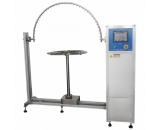

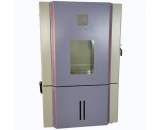

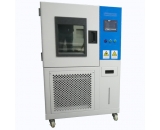

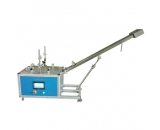

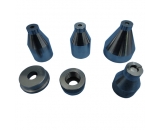






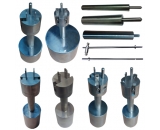
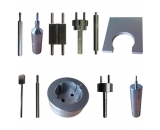
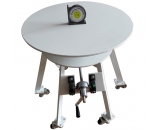
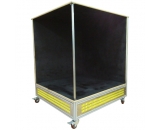

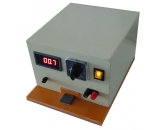
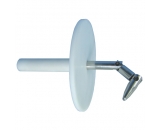
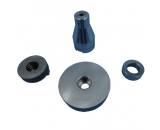
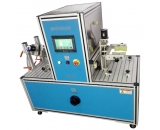
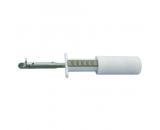
 显身卡
显身卡 楼主
楼主













